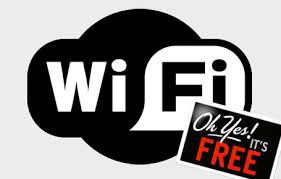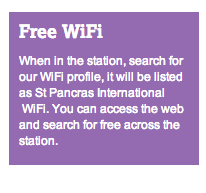If digitail (digital in retail) is still an embryonic science, it is estimated that around 20-30% of stores in the US now provide free wifi access. For the remainder, reasons why retailers or mall owners (and the like) have not embraced offering free wifi most typically revolve around the cost argument. For many of the smaller boutiques, it can be a generational thing or a lack of expertise. For the bigger stores that still have not made the switch (e.g. GAP), I would tend to argue that the real reason is that the managers who are calling the shots are not interacting enough with their clients. When the HQ personnel go to the store, they probably have 3G or better on their smartphone of choice (on a company dime). When they go to stores, they have been programmed to look at how the merchandise is arranged, if the pricing is correct, if the signage is appropriate, and whether the staff fulfilling their duties. Actually looking at and understanding with empathy the customer’s experience is another affair. And, within that, the technology issue is oftentimes a foreign commodity. Yet, it doesn’t take much to see how omnipresent the mobile is in the aisles of stores.
Going halfway
For those that install a wifi network, it can be a painful experience when done half-assed. Some retail outlets have installed a wifi network, but reserve the wifi access only to staff. In this case, the most criminal thing to do is to keep the wifi hotspot visible to the public. {Tweet this!} Some stores have chosen to offer wifi, but with only a minimal amount of bandwidth which more often than not means surfing in molasses or forever looking at hourglasses. Providing free wifi in-store is not a trivial decision. If there are technical hitches, the customer or user experience quickly goes south.
Poor user experience
If you are going to provide free wifi, do it right. Probably the most critical component of a good user experience when offering free wifi is at the sign-in stage. {Tweet this if you agree!} For example, it can be a poor experience if the connection is slow to find or to link up; or, if you ask too many questions of the user. Alternatively, you make the user do something too challenging in order to get access. A recent example of a poor user experience (only recently implemented) is at St Pancras station in London where, up until the summer, wifi was open, free and reasonably robust considering the volume of users. It is still all of those, except, they have decided to include an obligatory pre-roll ad. As the notion and usage of wifi evolves, companies are learning to experiment. In the case of St Pancras, obviously wanting to get a return on their investment, they are now providing a multi-tier wifi access. If you provide your email, you get a faster and longer connection. And by inputting one’s personal details, one has to imagine that we’re onto the beginning of ‘personalization’ (aka more marketing messages).
Watch (out for) Video
How does it work at St Pancras? When you click on the “_ST Pancras” wifi hotspot, a pop-up in your browser asks you to view a video. The video is a preview to a film. The shame is that the video is the same each time (for example when you are booted out and how to re-log in). They do not provide alternative content, making the viewing of the video quite rebarbative as a frequent passenger at St Pancras. I discovered you can, at least, fast forward the 30-second video to the end. Once you get through it, you can select a free 20-minute open access (i.e. without any need to log in or hand over any credentials). Alternatively, you can log in and get unlimited, faster access. In exchange for logging in, I assume, they will be looking at mining the data to make more adapted commercial offers. Finally, in a premium mode, for travelers with access to the Business Lounge, there is an open access (with password). And video viewing or email are not required.
Recommendation: If you’re thinking of adding video as part of the upfront sign in, my recommendation is to kill it! = poor user experience. However, if you hold dear to the notion of the video pre-roll, get ready to provide more bandwidth. I understand monetizing the wifi; but, I suggest the better option would be to make only for the anonymous user watch the video.
Wifi user experience
A classic issue with providing free wifi access in stores and public spaces is the lack of sufficient bandwidth. Somehow, it feels like businesses are rather shortsighted about the speed with which bandwidth use is accelerating. No sooner has an installation been made than it starts clogging, especially at peak times – when the option of a wireless connection and contact might be optimal (for example, to assuage overwhelmed sales personnel on the floor).
Recommendation: If a store is going to go to the trouble of installing wifi hubs, then anticipate much greater-than-expected consumption/bandwidth.
Closed wifi
While it can seem perfectly right to provide wifi only to the staff, then it is best not to show that the wifi is available to the general public. The fact that wifi is available, but is not being offered to the paying customer, can feel like a rather rude slap on the face. I have already seen some staff feel very uncomfortable with this discrepancy in service.
Recommendation: Hide the wifi label, so that it doesn’t show on the punters’ device. The wifi address should be hidden so that only the staff know how to find it. The technical term (to use with your IT) is to turn off the SSID (Service Set Identifier) broadcast of your router.
Any thoughts and reactions? Happy to hear about your experiences!














If we take stores for example I think that adding free WIFI is a great tactic, but one that only make sense if the store/company/organisation is digitally ready. We know all to well how it works here in France “Oh, no photos please”, “No mobiles” etc… these are the things to solve before thinking about having free WIFI or not.